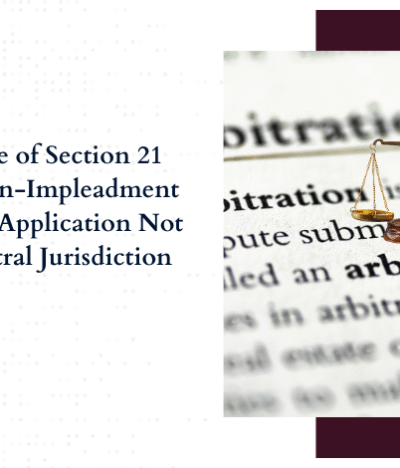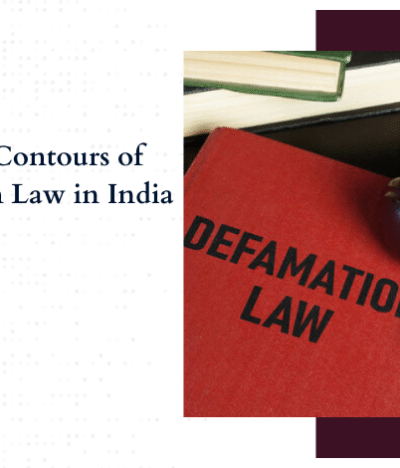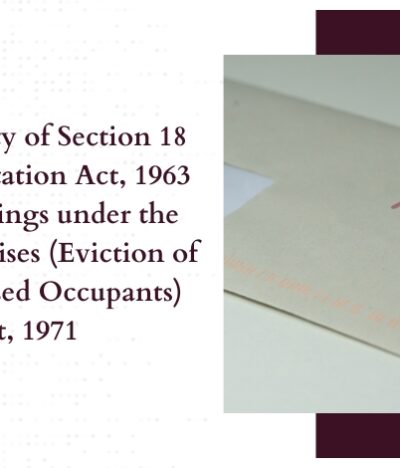The Supreme Court of India while allowing retrospective application of its ruling explained that the doctrine of prospective overruling means an old well-established principle of law is overruled and the new legal principle would be applicable for all future instances. The intent of the doctrine is to avoid any injustice or hardships for the parties or individuals to whom the doctrine applies.
Background
On December 28, 1957, the Union Government passed the Mines and Minerals (Development and Regulation) Act, also known as the Mines Act. This legislation brought the control of mines and minerals under the jurisdiction of the Union. According to Section 9 of the Act, holders of mining leases were required to pay royalties for any “mineral removed or consumed” from the leased area.
The current appeal focused on the division of legislative authority between the Union and States concerning the taxation of mineral rights, centered on Entry 50 of List II in the Seventh Schedule of the Constitution. This entry addresses taxes on mineral rights, subject to limitations set by Parliament on mineral development. Regulation of mines and mineral development is covered under both the Union List (Entry 54 of List I) and the State List (Entry 23 of List II).
Parliament enacted the Mines and Minerals (Development and Regulation) Act (MMDR Act) in 1957 under its powers in Article 246, aligning with Entry 54 of List I. The Act serves as a comprehensive code for mine regulation and mineral development, with Section 9 requiring mining leaseholders to pay royalties for any minerals removed or consumed.
In India Cement Ltd. v. State of Tamil Nadu, the Supreme Court ruled that royalties are a form of tax, and state legislatures lack the authority to impose taxes on mineral rights, as these are governed by the MMDR Act. However, in State of West Bengal v. Kesoram Industries Ltd., the Court clarified that royalties are not taxes. Following these rulings, some state legislatures-imposed taxes on mineral-bearing lands under Entry 49 of List II, using mineral value or royalty as the tax base. States like Rajasthan and Uttar Pradesh also introduced additional levies, such as environmental and health cess, which were challenged in the High Courts for exceeding state legislative powers.
In Mineral Area Development Authority v. Steel Authority of India, a nine-judge bench of the Supreme Court addressed the questions referred to it, based on the majority’s conclusions. In doing so, the Court overruled the decision in India Cement Ltd. v. State of Tamil Nadu and subsequent judgments that relied on it. Following the judgment, the counsel for the asseses requested that the ruling be applied prospectively. As a result, the Court scheduled further hearings to consider whether the judgment should have prospective effect.
The Effect of Prospective Ruling
The doctrine of prospective overruling is applied by Constitutional Courts when they overturn a well-established precedent by introducing a new rule, but limit the rule’s application to future cases to prevent injustice or hardship. This doctrine was developed in the U.S., where the Constitution neither mandates nor forbids prospective effect. The U.S. Supreme Court has acknowledged that existing statutes or judicial decisions create “operative facts” that cannot be ignored or erased by new rulings.
In Chevron Oil Company v. Huson, the U.S. Supreme Court identified three factors for considering prospective overruling:
- The decision must establish a new principle of law, either by overruling clear precedent or addressing an issue of first impression.
- The court must weigh the benefits and drawbacks of applying the rule prospectively, considering the rule’s history, purpose, and impact.
- The court must consider whether non-prospectivity avoids significant inequities or hardships.
The Indian Supreme Court has adopted this doctrine, inspired in part by U.S. jurisprudence. In Golak Nath v. State of Punjab, an eleven-judge bench considered the validity of the Constitution (Seventeenth Amendment) Act, 1964, which included certain state agrarian laws in the Ninth Schedule. The Court declared that constitutional amendments are subject to the limitations of Article 13(2), thus invalidating the amendment for infringing Article 13(2). However, the Court decided to apply this ruling prospectively to avoid chaos and unrest.
Chief Justice K. Subba Rao, in Golak Nath, articulated that the power to apply prospective overruling is rooted in Article 142 and formulated these principles:
- It applies only to constitutional matters.
- It can be invoked solely by the Supreme Court, which has the jurisdiction to declare law binding on all courts in India.
- The scope of retroactivity is at the Court’s discretion, allowing it to tailor relief to meet the ends of justice.
Although Golak Nath was later overruled by Kesavananda Bharati v. State of Kerala, the doctrine of prospective overruling remains accepted by the Court and has been applied in various contexts. Key principles include:
- The Court’s power to mold relief is derived from Article 142.
- It is used when overruling a final decision or when deciding an issue for the first time.
- The aim is to validate actions taken before the declaration in the public interest, without validating an invalid law.
- It prevents reopening settled cases to avoid hardship.
- It ensures a smooth transition in law without unduly affecting rights based on the overruled law.
- It avoids reopening settled issues, refunding amounts collected under invalid laws, and a multiplicity of proceedings.
- It prevents social and economic disruptions, allowing affected parties time to adjust.
The Court often uses Article 142 to limit the retroactivity of its decisions. For example, in Union of India v. Mohd. Ramzan Khan, the Court held that failing to provide an inquiry report to an employee violated natural justice and declared this prospectively. In Managing Director, ECIL v. B Karunakar, the Constitution Bench upheld this prospective application, citing that the legal position on inquiry reports was unsettled before Ramzan Khan and reopening all past cases would cause more harm than good. Thus, the Court ruled that proceedings before Ramzan Khan could not be challenged for failing to provide inquiry reports.
Held
However, in the present appeal the Apex Court upholding the powers of the States to tax mineral rights and mineral-bearing lands the Court allowed a retrospective application of the ruling.
This means that the Court has allowed the States to recover the tax dues for the past period based on the judgment in Mineral Area Development Authority v. M/S Steel Authority Of India & Ors. (MADA) At the same time, the Court clarified that the levy of tax by the States, based on this judgment, should not operate on transactions made during the period before April 1, 2005.
The Court also stated that the tax arrears can be paid over a staggered period of 12 years from April 1, 2026. The Court further stated that there should be no levy of interest or penalty for the demand made for the period before July 25, 2024.
The Court chose not to apply the MADA decision prospectively for several reasons:
- The MADA ruling affirmed the states’ authority to enact laws for taxing mineral rights.
- If applied only to future cases, the Court would need to revisit earlier legislation.
- Before MADA, there were conflicting rulings on states’ taxing powers in India Cement and Kesoram.
- When dealing with older laws, the Court had to consider the unclear legal landscape before MADA, and recognize that laws created by elected representatives reflect the people’s will and shouldn’t be easily invalidated unless they clearly breach the Constitution.
- Prospective application of MADA would invalidate state tax laws and require states to refund collected taxes.
- Now that MADA has resolved the legal conflict, applying it only to future cases would be unjust.
Conclusion
The Supreme Court of India, in its ruling, allowed the retrospective application of the decision in Mineral Area Development Authority v. Steel Authority of India (MADA), thereby affirming the states’ authority to impose taxes on mineral rights and mineral-bearing lands. The Court, while acknowledging the significance of the doctrine of prospective overruling, clarified that it did not find it appropriate to limit the MADA ruling to future cases alone. The retrospective application was justified for several reasons
The MADA decision upheld the state’s power to legislate on the taxation of mineral rights, a
Accordingly, the Court allowed states to recover past tax dues in line with the MADA judgment but stipulated that the levy of tax should not apply to transactions prior to April 1, 2005. The Court further permitted the payment of tax arrears over a 12-year period starting from April 1, 2026, and ordered that no interest or penalties be imposed for demands relating to the period before July 25, 2024. The Court’s decision to uphold the retrospective application underscores the importance of ensuring legal continuity and fairness while respecting the legislative authority of the states.






